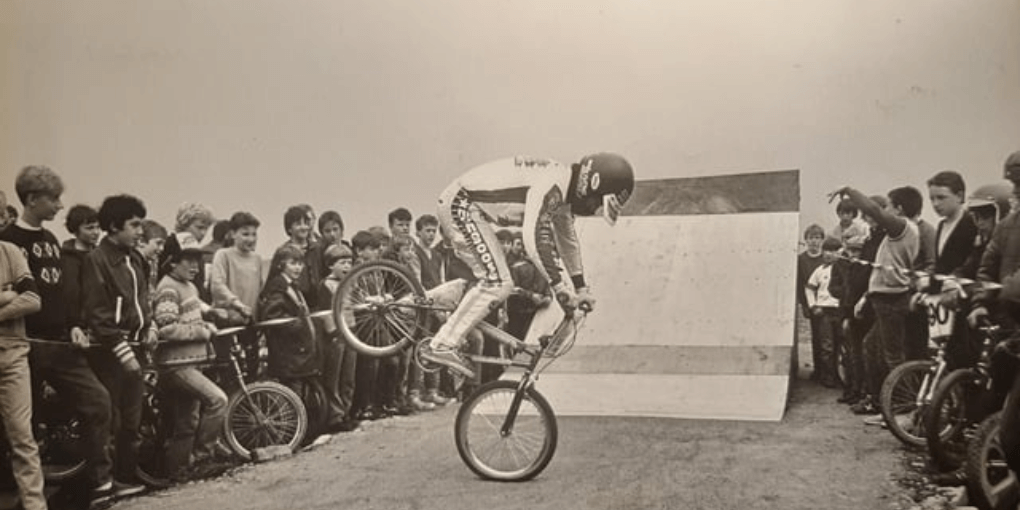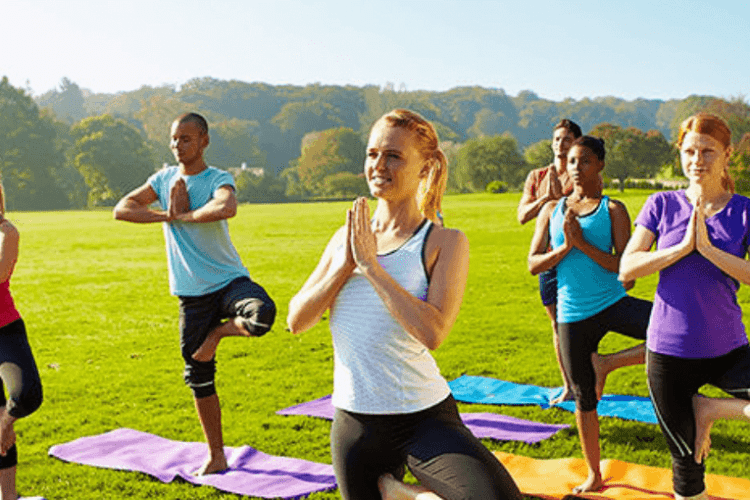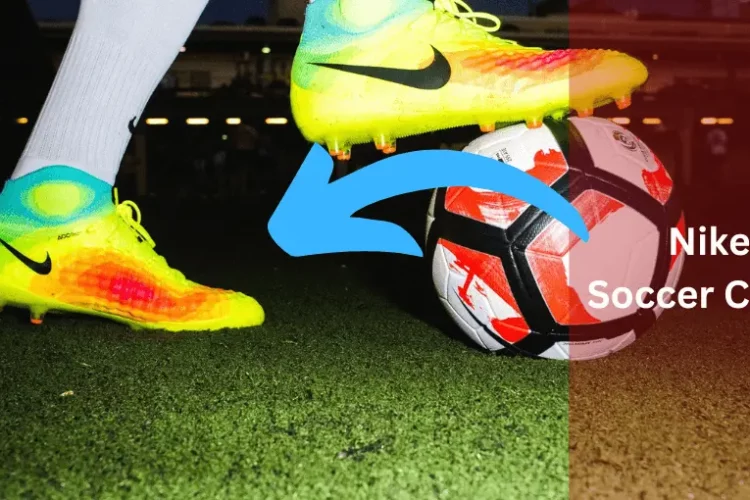BMX Bike History: From the Streets to the Olympics
Did you know?
The BMX track at the 1984 Olympics in Los Angeles was constructed using surplus dirt from the construction of the LA Metro, highlighting the grassroots nature of the sport even on the world stage.
Hey there! Welcome to the awesome world of BMX bike history! Every jump, every trick, and every race has a cool story to tell. And I will walk you through this exciting story in this blog post.
We’re going on a wild ride to see how BMX biking has changed over time. It all started on the streets, and now it’s a big deal at the Olympics!
Get ready to learn about BMX biking’s cool past. From its beginnings as a street sport to its big moment at the Olympics. You’ll finish knowing a lot more about why BMX biking is so awesome!
Early Beginnings
The early beginning was interesting and exciting from various aspects. Get ready to explore the fascinating origins of BMX biking in this section.

We’ll take a journey back to the 1960s and 1970s to uncover how BMX first emerged.
Origins of BMX
Let’s talk about where BMX biking came from. It all started back in the 1960s and 1970s. People were looking for new ways to have fun on bikes, and that’s when BMX bike history started to take shape.
Young folks were inspired by motorcycle racing and decided to organize their own races on dirt tracks. The first official BMX race happened in California in 1963.
Street Riding Culture
BMX didn’t start as a sport with fancy tracks or stadiums. It began on the streets, with riders showing off their skills in urban areas.
Think of it like skateboarders doing tricks in city parks. Riders would race around neighborhoods, jumping over curbs and showing off their coolest moves.
Early Innovations
As BMX grew, so did the bikes and the tricks. People started tinkering with bike designs to make them better for jumps and stunts.
Riding styles also began to evolve, with riders pushing the limits of what they could do on two wheels.
They’d add stronger frames, better brakes, and other adjustments to make their bikes perform better. It was like a big experiment to see how far they could go with their bikes.
Rise in Popularity
In this section, we’ll discover how BMX transformed from traditional racing to freestyle riding, where riders perform thrilling tricks.
We’ll also learn about the creation of BMX parks and the exciting growth of competitive events.
We’ll explore how BMX became a mainstream sensation through movies, TV shows, and magazines, captivating audiences around the world. Get ready for an adventure into the heart of BMX culture!
Transition to Freestyle
BMX used to be mainly about racing on dirt tracks, like a speedy bike marathon. But then freestyle BMX came along and changed the game. Instead of racing, riders started doing crazy tricks and stunts.
It’s almost like dancing with their bikes. This shift to freestyle riding brought a whole new level of excitement to the BMX scene. Riders were flipping, spinning, and soaring through the air with incredible skill and style.
Fun fact: Riders like Bob Haro and Mat Hoffman are often called the pioneers of freestyle BMX. Because they were among the first to show off these amazing tricks.
BMX Parks and Competitions
As freestyle BMX gained popularity, people realized they needed special places to showcase these incredible skills. That’s when BMX parks started popping up.
These parks were like playgrounds for BMX riders, full of ramps, rails, and other cool obstacles to ride on. Riders of all ages and levels would gather at these parks to practice and show off their moves.
And where there are talented riders, there are competitions. From small local events to big international contests like the X Games, BMX competitions became a big deal.
“Did you know? The very first BMX park, called the Carlsbad Skatepark, opened in California in 1976, marking the beginning of a new era for BMX.”
Media Exposure
Freestyle BMX wasn’t just thrilling to watch in person—it also started getting attention in movies, TV shows, and magazines. Films like “Rad“ and TV programs like “MTV’s Road Rules“ showcased the excitement and energy of BMX riding to a wider audience.
Magazines like BMX Plus! gave fans a closer look at the sport, featuring interviews with riders, tips for pulling off tricks, and coverage of events. Suddenly, BMX wasn’t just a sport—it was a whole culture, influencing music, fashion, and more.
With the rise of social media, BMX found even more ways to connect with fans around the world, making it a global phenomenon.
Olympic Recognition
In this section, we’ll discover the BMX bike history of the Olympics, how BMX went from being underground to an Olympic sport, its impact, and memorable moments from the Games.
Inclusion in the Olympics
BMX, once a sport known mainly to a few, now grabs the spotlight at the Olympics. It’s quite a journey!
In 2008, BMX became an Olympic sport for the first time at the Summer Games in Beijing, China. This was a massive moment for BMX riders everywhere.
“Fun fact: The BMX track used in Beijing was designed by Tom Ritzenthaler, who used to race BMX himself.”
Impact on the Sport
BMX being part of the Olympics wasn’t just about winning medals—it made a huge difference for the sport. Suddenly, BMX wasn’t just something people did for fun!
It became an Olympic sport, getting respect and love from fans and athletes worldwide. The Olympics brought more money, better places to ride, and more people wanting to try BMX. It also made many young riders dream of becoming Olympic champions.
“Did you know? After BMX became an Olympic sport, countries like Colombia and Latvia, not known for BMX before, started producing great riders. These riders competed at the Olympics.”
Notable Moments
The Olympics gave us some amazing BMX moments. Like in 2012, when Mariana Pajón from Colombia won the first gold medal for women’s BMX racing. And in 2016, when Connor Fields from the United States won gold in men’s BMX racing.
These moments show how exciting BMX can be. They inspire riders everywhere to aim high. Whether it’s at the Olympics or just having fun on their bikes
Modern Developments
In this section, we’ll learn about professional riders, bike technology, and how BMX culture has spread globally, inspiring young riders everywhere.
Professionalization of the Sport
Let’s discuss the rise of professional BMX riders and the evolution of sponsorships.
Evolution into a Career
BMX has changed from just a hobby to a real job for many riders. They make money from sponsorships, competitions, and ads. Some top riders even have their own special product lines.
Sponsorship Boom
Sponsors are super important for making BMX a job. They give riders money, gear, and exposure in exchange for advertising. This helps riders focus on riding and compete at the highest level.
Rise of Pro Leagues
There are now professional BMX leagues and tours where riders can show off their skills. Big events like the X Games and the UCI BMX World Championships attract top riders, and huge audiences, making BMX even more popular.
Fun Fact: Bob Haro, the first-ever professional BMX rider, is famous for making freestyle BMX popular and starting the pro side of the sport.
Technological Advances
Let’s discuss how advancements in bike technology have impacted BMX riding.
Lighter and Tougher Bikes
BMX bikes today are super light, strong, and tough. New materials and designs like carbon fiber frames and titanium parts have made bikes better than ever.
Better Performance
Modern BMX bikes have cool features like sealed bearings and hydraulic brakes, making them work better and last longer. This lets riders try new tricks and push their limits.
Customize Your Ride
Riders can make their bikes unique with lots of different parts. They can choose what they like and how they want to ride.
Fun Fact: BMX bikes started a 20-inch wheel size, which is now standard for most bikes, like mountain bikes and city cruisers.
Global Influence
Here I will discuss the international spread of BMX culture and its influence on youth around the world.
Sharing BMX Worldwide
BMX is everywhere now, from big cities to small towns all around the world. Young people everywhere love BMX because it lets them be creative and express themselves.
Social Media Connection
Social media sites like Instagram and YouTube bring BMX communities together. Riders can share their tricks and adventures with people all over the world, which helps BMX grow even more.
Olympic Fame
BMX is now part of the Olympics, which shows how big it’s become. Being in the Olympics inspires lots of young riders to dream big and try to be the best in the world.
Fun Fact: BMX racing joined the Olympics in 2008 in Beijing, China. Maris Strombergs from Latvia and Anne-Caroline Chausson from France won the first gold medals for BMX racing.
Challenges and Future Prospects
In this part, we’ll talk about making sure BMX riders are safe while they do cool tricks. We’ll also look at ways to take care of the environment while doing BMX.
Then, we’ll think about what might happen in the future of BMX biking and what new things we might see.
Safety Concerns
Here we’ll look at the things that can make riding BMX risky and what’s being done to keep riders safe.
- Risks in BMX Riding: Riding BMX bikes is fun, but it can be dangerous too. Riders can get hurt doing tricks or riding on rough terrain.
- Efforts for Rider Protection: People are working to keep BMX riders safe. They make sure riders wear helmets and use good protective gear.
- Advancements in Safety Gear: New gear, like padded clothes and strong materials, helps protect riders from getting hurt.
- Education and Training: Riders learn how to ride safely and what to do if something goes wrong.
Sustainability
Here I will discuss initiatives to promote environmentally-friendly practices in BMX.
- Environmental Concerns: People are worried about the environment. They want BMX to be eco-friendly.
- Eco-Friendly Practices: BMX is trying to be more eco-friendly by using materials that are good for the environment.
- Promotion of Eco-Conscious Behaviors: They also encourage riders and fans to do things that help the environment.
- Development of Sustainable Facilities: BMX places are being built with things like solar power and ways to save water.
Future Trends
Here we’ll explore what exciting changes and developments might be in store for the sport.
- Technological Advancements: BMX bikes may get even better with new technology. They could be lighter, stronger, and faster.
- Integration of Digital Technology: BMX might use cool new technology like virtual reality to make riding even more fun.
- Globalization and Diversity: BMX is becoming popular all over the world. That means more people from different places are getting into it.
- Enduring Appeal: Even with changes, BMX will always be a fun way for people to be creative and have adventures.
Let’s Conclude
Wow, what an amazing journey we’ve had exploring the history of BMX biking! From its simple beginnings to its big moments at the Olympics, we’ve covered a lot of ground. Let’s quickly look back at what we’ve learned.
We’ve talked about how BMX biking started and how it became popular all over the world. We’ve seen how it’s not just a sport but a culture that brings people together.
Are you feeling excited? Keep the BMX fun going! You can visit your local skatepark, watch cool competitions, or even share your own BMX adventures with others. And check here everything you need to know about BMX bike
As we finish our journey through BMX history, remember this: “Life is like riding a bicycle. To keep your balance, you must keep moving.” So keep riding, keep exploring, and keep having fun with BMX biking!
FAQs
BMX biking was inspired by motorcycle racing and the desire for young people to have fun on bikes. It emerged in the 1960s and 1970s as riders organized their own races on dirt tracks.
BMX evolved from traditional racing to freestyle riding, where riders started performing tricks and stunts instead of focusing solely on speed. Riders like Bob Haro and Mat Hoffman pioneered this shift, introducing new and thrilling maneuvers.
BMX parks provided dedicated spaces for riders to showcase their skills and practice new tricks. These parks, filled with ramps, rails, and obstacles, became hubs for the BMX community, hosting competitions and fostering creativity.
Movies, TV shows, and magazines played a significant role in bringing BMX to a wider audience. Films like "Rad" and TV programs like "MTV's Road Rules" showcased the excitement of BMX riding, while magazines provided in-depth coverage and insights into the sport.


